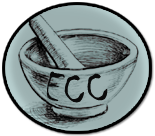


Executive Conference Corporation
The mission of ECC Webinars is to provide the pharmaceutical, biotech, and medical device industries with leading edge and informative webinars led by experts in their fields, fostering a stronger knowledge base in the workforce.
"The Difference is Distictive"
Archived Webinar
Risk Management and The New General Chapter, USP<60>, Burkholderia cepacia
- Date: Thursday November 21, 2024
- Time: 12:00 pm – 1:30 pm (NY Time)
- Instructor(s): Barry A. Friedman Ph.D
- Webinar ID#: ECC-648
Burkholderia cepacia and its BCC Complex are bacterial species that are ubiquitous in nature and often found as a frequent recall issue based upon CDER data. Pharmaceutical products that are contaminated with B. cepacia and/or its Complex may pose serious issues to infants, elderly and immunocompromised individuals. Preventing B. cepacia contamination in drugs by addressing the potential sources of this bacterium in a drug manufacturing operation is an important public health goal.
Historically, when the USP was revised in May 2009, it was modified to include both USP<61> and USP<62> and harmonized with both the European Union (EU) and Japanese Pharmacopeia (JP). B. cepacia was excluded at that time as a “specified” bacterium – even though many individuals believed that it should have been included. In addition, it was not included within USP<1111> when it also was modified several years ago. One of the main reasons that all believed that it should have been included was because of the frequency in which it occurs and the diversity of environments and products in which it has been found. Nevertheless, it is still classified as an “objectional”, but not “specified” microorganism.
The method of transmission through direct contact with other individuals includes the shaking of hands and even body perspiration. Although B. cepacia does not appear to survive on completely dry surfaces for more than one week, it can survive for many months in water. B. cepacia can use other routes of transmission including contact with hard surfaces. Perhaps most important to note is this microbe’s ability to remain viable under harsh conditions (e.g., organic solvents, antiseptics, low nutrients, etc.) for many months. Given the robust nature of the organism, it is important to consider the relatively high patient risk when this microorganism is present in manufacturing equipment, components, or the process water used in manufacturing pharmaceutical products.
The Objective of this live, interactive Executive Conference Corp. training webinar is to explore the various issues surrounding the history of B. cepacia and its Complex and examine solutions to common microbiological problems. It will discuss the General Chapter USP<60> which was issued December 2019, media that is used, as well as consider recalls, FDA 483s and Warning Letters. The webinar will also review why 16S rRNA identification will not work satisfactorily with this Complex. Please plan to bring an interdisciplinary team to this Webinar to explore how knowledge regarding this contaminant may assist you in your facilities and minimize it as an Objectionable microorganism.
Learning benefits will include:
-A review of the pertinent history of B. cepacia.
-Extensive review of the process involved in the isolation and identification of B. cepacia.
-Explore the “new” recommended medium for propagation of this microorganism
-Learn why USP<60> does not provide a sufficient identification (genus/species) within 16S rRNA identification platforms
-Use of B. cepacia within USP<1111> as a potential monograph addition.
-Experience what Companies have encountered with Recalls, Form FDA 483s and Warning Letter examples.
-Case studies of Warning Letters with B. cepacia
Those who should attend include:
- Manufacturing
- Validation
- Quality Control
- Quality Assurance
- Microbiology
- Research/Development
- Project Management
Fee:
$385 for one person
$700 2-5 people
$999 6-10 people

